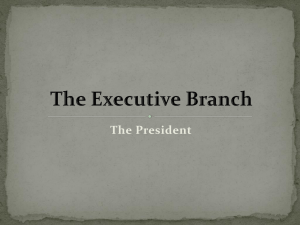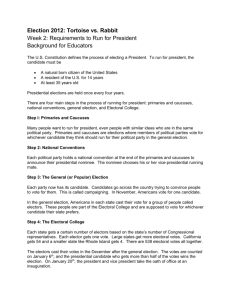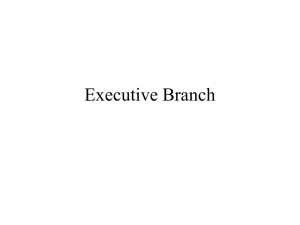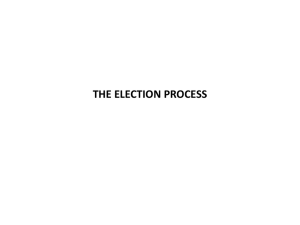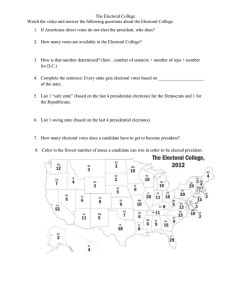The Election of the President
advertisement
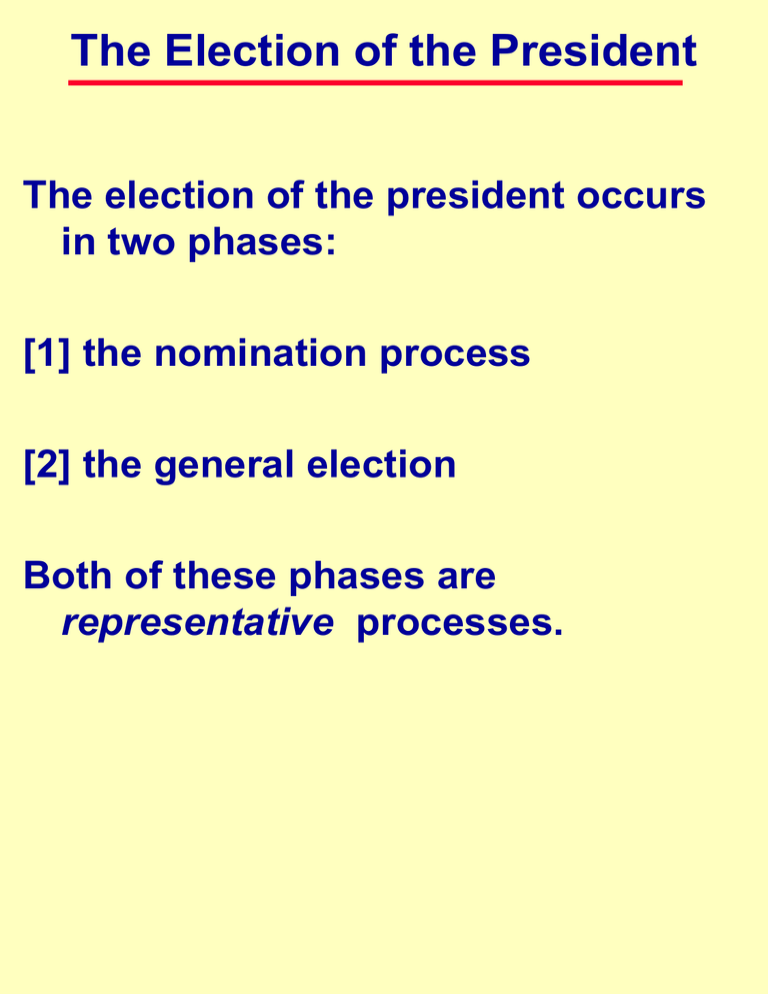
The Election of the President The election of the president occurs in two phases: [1] the nomination process [2] the general election Both of these phases are representative processes. The Nomination Process This phase involves: • a series of state-by-state primaries and/or caucuses [January - June] [The purpose of this stage is to select delegates from each state to each party’s national convention. The process varies substantially from state-to-state depending on whether the state uses primaries, caucuses, or a combination of the two and on the rules of each political party. The two major parties use some combination of primaries and caucuses. Minor parties may use other means to select delegates to their national conventions depending on state laws.] • national conventions [July - August] [Delegates to the major party conventions are flexibly committed to particular presidential candidates in proportion to the percentage of votes each candidate received in the primaries/caucuses. The primary purpose of the convention is to nominate the party’s presidential and vicepresidential candidates. Additionally, the national conventions finalize and adopt their parties platforms.] The General Election This phase involves: • the campaign [Labor Day to Election] • the popular vote [1st Tuesday in November] [Voters cast their ballots for their preferred presidential/vice-presidential ticket but are, in fact, voting for a slate of electors who are politically committed to cast their electoral votes in a fashion consistent with the popular vote.] • the Electoral College vote [December] [Electors meet in their respective States to cast electoral votes. The votes are sealed and sent to the House of Representatives in Washington, D.C.] • canvassing the Elecetoral vote [January] [The House of Representatives counts the electoral votes for President and verifies the winner. The Senate counts the votes for vice-president and verifies the winner.] More on the Electoral College Vote History of the Electoral College • constitutional requirements • framers’ intent -mechanical failure of the institution -the 12th Amendment -philosophical failure • the development of the ‘unit rule’ • criticisms of the Electoral College -the ‘faithless’ elector -one candidate wins the popular vote, another wins the electoral vote • defense of the Electoral College -political controls on electors -the ‘unit rule’ exaggerates or magnifies popular vote; provides mandate 1996 Electoral Vote Perot 0% Dole 30% Clinton 70% 1996 Popular Popular Vote 1996 Vote Perot 8% Dole 42% Others 1% Clinton 49% 1996 Presidential Election Results STATE ELECTORAL VOTES Kentucky Oklahoma South Carolina Iowa Oregon Mississippi Arkansas Kansas Nebraska New Mexico Utah West Virginia Hawaii Idaho Maine Nevada New Hampshire Rhode Island Alaska Delaware Montana North Dakota South Dakota Vermont Washington, DC Wyoming Electoral Vote Totals CLINTON DOLE PEROT 8 8 8 7 7 7 6 6 5 5 5 5 4 4 4 4 4 4 3 3 3 3 3 3 3 3 8 0 0 7 7 0 6 0 0 5 0 5 4 0 4 0 4 4 0 3 0 0 0 3 3 0 0 8 8 0 0 7 0 6 5 0 5 0 0 4 0 4 0 0 3 0 3 3 3 0 0 3 0 0 0 0 0 0 0 0 0 0 0 0 0 0 0 0 0 0 0 0 0 0 0 0 0 0 538 375 163 0 49% 42% 8% Popular Vote Totals
